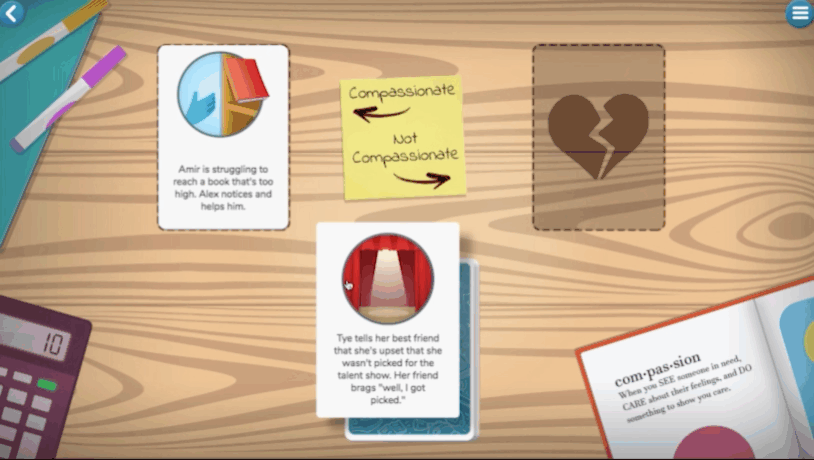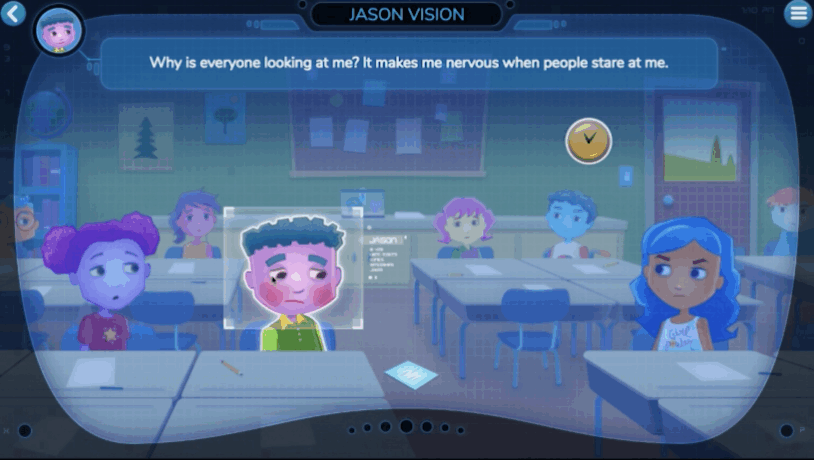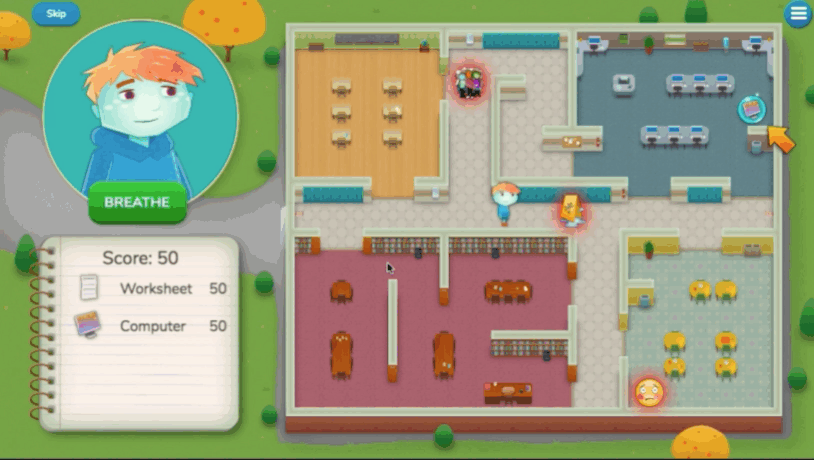Watch a Lesson Now!
Lower Elementary Lesson 1: What is Compassion?
Before students can understand how to act more compassionately, they must first develop a foundational understanding of the concept. In this animated lesson, relatable characters introduce students to compassion. Following the whole-group experience, teachers can then lead a classroom discussion and activity or log into the digital platform where students individually or collectively apply learning in fun, digital activities.
Get Started with the Compassion Project Today
The Compassion Project is a free multimedia curriculum for lower and upper elementary students containing three online lessons in addition to offline classroom-based lessons that each take approximately 30-45 minutes to complete. There are digital activity extensions for three of the core lessons that bring these topics to life.
The lessons are scaffolded, building upon each previous lesson. Students will get the most out of the project by taking all lessons in order and using all components. However, you can also pick and choose your lessons.
See the Digital Lessons in Action!
Explore more of the Compassion Project! The boxes below contain a short description of the different lessons. Hover over each box to learn more.
Lesson 1
Lower Elementary
Lower Elementary
What is Compassion?
This lesson builds students’ understanding of compassion and empathy. Students will learn how to understand other points of view, manage strong emotions as they arise, and build stronger relationships with friends.
Compassion & Empathy
Upper Elementary
Compassion & Empathy
Students explore the meaning of compassion and empathy, and how they can show and recognize it inside and outside of the classroom. The lesson emphasizes that having empathy for another person can, and should, lead to showing them compassion.
Lesson 2
Lower Elementary
Lower Elementary
Understanding Self
Students learn the importance of treating one’s self with kindness, concern, and support. The lesson teaches students about mindfulness, overcoming negative thoughts, forgiving others and yourself for mistakes, and how a growth mindset and compassion are related.
Compassion & Empathy
Upper Elementary
Mistakes & Self-Care
This lesson discusses the idea of having a growth mindset and how to show compassion without judgment of mistakes made. Students are also introduced to the concept of self-care and compassion toward self, and how these can help us reset and move on following failures and mistakes.
Lesson 2
Lower Elementary
Lower Elementary
Practicing Compassion
This lesson illustrates what students can do each day to live more compassionately. Students will better understand the positive outcomes of compassion at school and in our communities through practicing acts of compassion and expressing gratitude.
Compassion & Empathy
Upper Elementary
Emotions & Mindfulness
This lesson explains the role our emotions play and how they relate to compassion. Students learn how to manage intense emotions and stress relief techniques. They will practice mindfulness activities that they can use anywhere to relieve stress and channel emotions for good.


